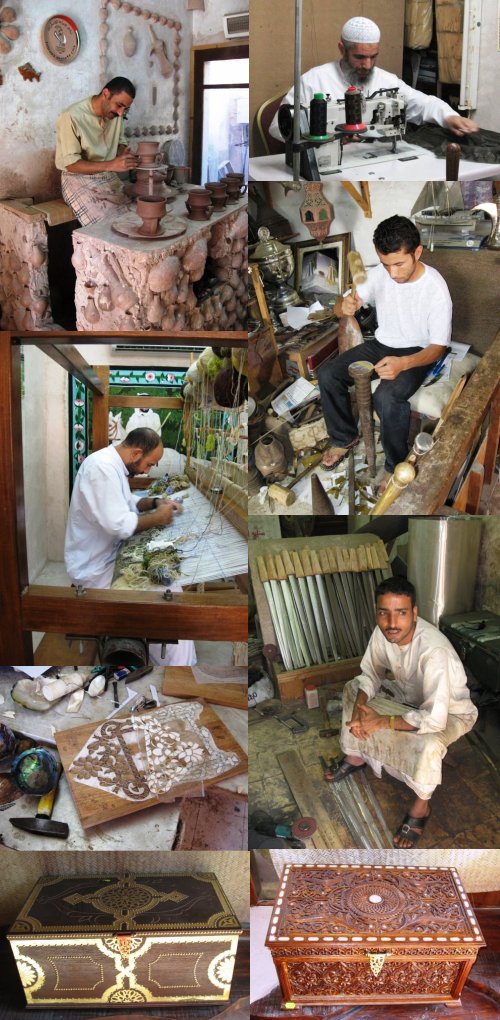
Blackwork Journey
Embroidery Designs by Elizabeth Almond
|
|
| Inspirations Middle East 1 |
Ceilings | China | Domes | Doors | Far East | Floors | India | Mausoleum | Middle East | Minarets | Mosques | People 1 | People 2 | People 3 | Thailand | Tiles | Turkey | Walls | Windows |
|
I have been very fortunate in visiting four of the countries in the Middle East, Bahrain, Dubai, Qatar and Abu Dhabi, all of which are multi faceted. The old and the new co-exist side by side for the moment, but with increasing development, especially in Dubai, how much of the past will be preserved? Hidden amongst the modern skyscrapers are mosques, souks and workshops where traditional skills are still practised. Before the discovery of oil, pearl fishing,dhow building and textile weaving were common crafts, along with more unusual skills, such as making wooden mubayet boxes which are mostly used to store clothes, gold, jewellery and other valuable acquisitions, including money and official documents. They are fitted with sturdy locks to guard against loss or theft.. They are also characterized by their heavy weight which makes them difficult to move.They stand on four wooden pillars which protects them from the damp. Gold and silver jewellery in unusual designs, studded with precious and semi-precious stones are also found in these countries,as well as delicate glass perfume bottles and many of the designs can be adapted for embroidery. Fabric weaving is a fast, meticulous and highly precise process that requires a great deal of mental and physical coordination as the weaver uses both his hands and legs to distribute and overlap the threads. Three to five metres of cotton would be woven each day, predominantly in red and black, although wool and silk are also used. A Bahraini weaver would weave many of the men’s garbs, such as azar, ghutar (head dresses), bisht (cloaks) as well as female dresses.The weavers also weave boat sails and mats which are used as carpets.I have watched this process throughout the Middle East. Embroidery is often done by men, especially on robes for the Sultan and his wives and senior officials, although colleges and workshops throughout the Middle East encourage women to participate in their traditional skills. |
| Inspirations Middle East 1 |
Ceilings | China | Domes | Doors | Far East | Floors | India | Mausoleum | Middle East | Minarets | Mosques | People 1 | People 2 | People 3 | Thailand | Tiles | Turkey | Walls | Windows |
Suileabhain
(c) blackworkjourney.co.uk 2014

